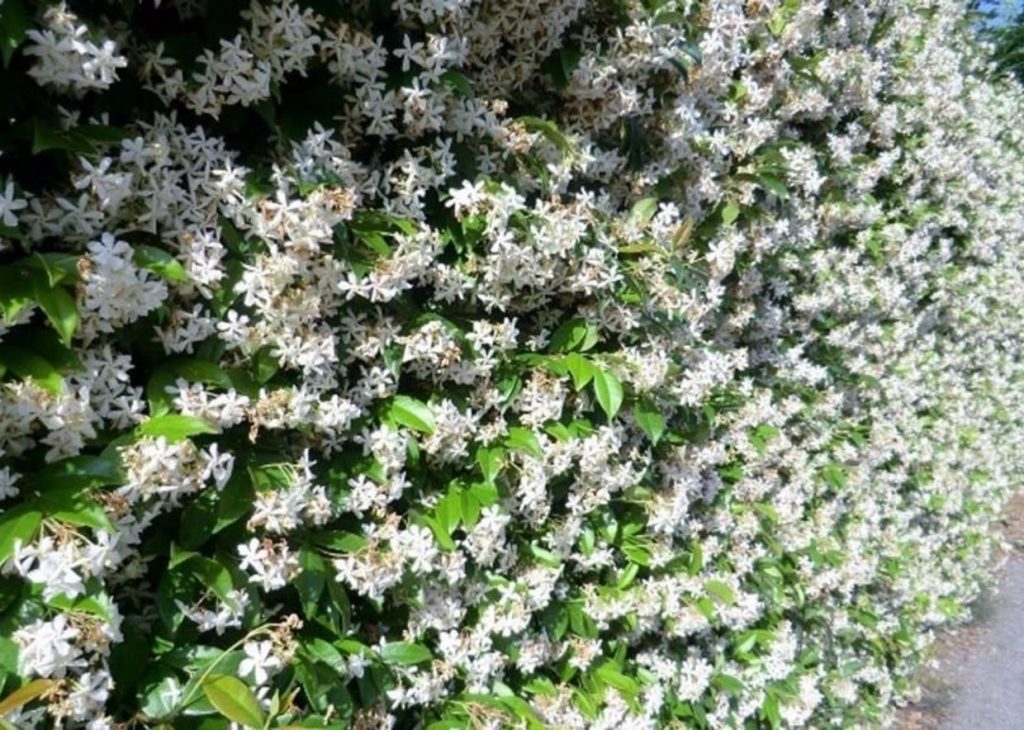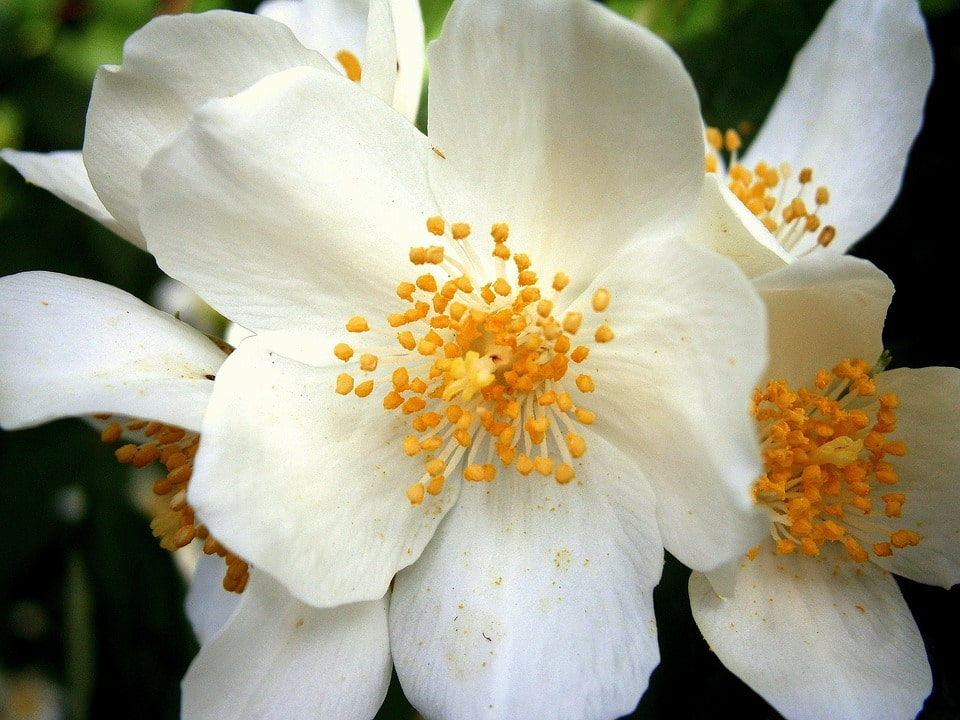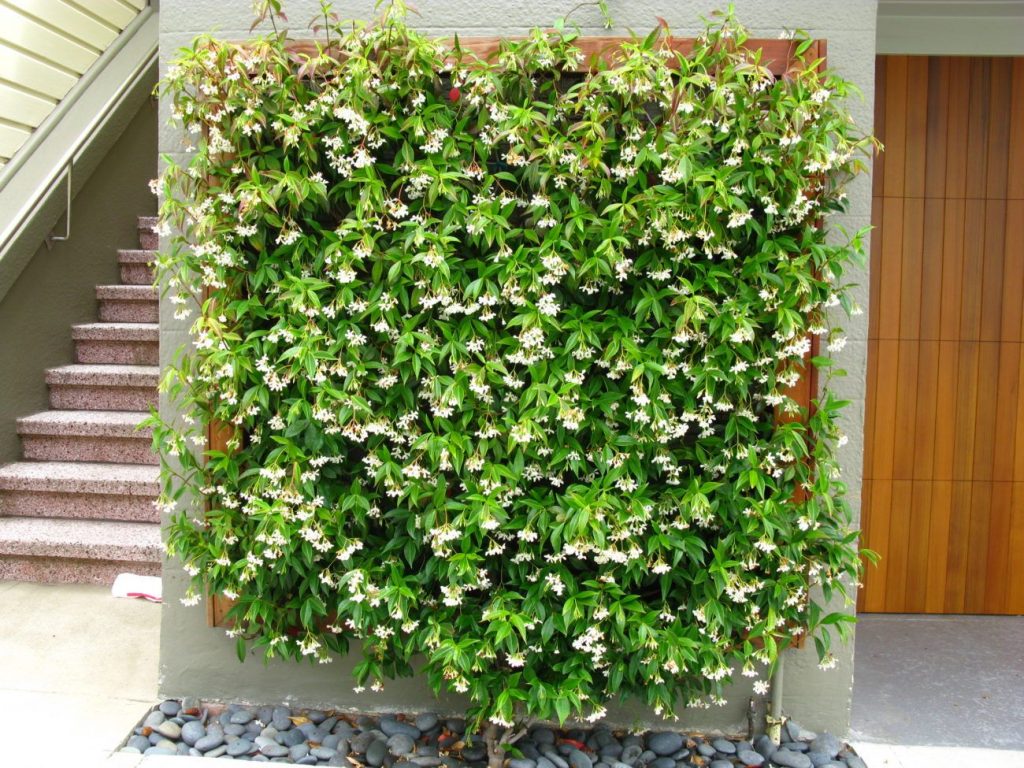Asian Jasmine or Trachelospermum flowers have a pleasant vanilla scent.
Asian Jasmine ( Trachelosperum ) brightens summer gardens with a beautiful sea of flowers and an almost seductive fragrance.
In winter, this evergreen will be a welcome decoration and bring a touch of Mediterranean flavor right into your home. The Asian Jasmine is also called star jasmine.
Table of Contents
Origin and Characteristics of the Asian Jasmine
Asian Jasmine ( Trachelospermum ) grows in tropical and subtropical regions of Asia. In Europe, this evergreen climbing shrub grows particularly well in the Mediterranean and wine regions. But it is also often cultivated as a container plant in Europe.
That being said, Asian Jasmine should not be confused with true Jasmine ( Jasminum officinale ). It has very similar characteristics, but it is not an evergreen. Asian Jasmine belongs to the Kutra family (Apocynaceae), so despite the similarities, it does not belong to the same family as true jasmine, which belongs to the olive family (Oleaceae).
The slow-growing plant can grow up to 4 m tall and produces white, pink, or light yellow star-shaped flowers, depending on the species and cultivar. It has a characteristic jasmine-like, floral, slightly sweet smell during flowering, which stands out, especially in the evening hours.
The flowering period is from April to August, but with good care, it can bloom until September. Asian Jasmine is a vine-like growing woody climbing plant. On the side shoots it forms oval, year-round green leaves, which, like the shoots, contain white poisonous milky juice.
The most beautiful species and varieties
All types of Asian Jasmines are similar to each other – the main difference lies in the color of the flowers. Let us briefly present here four classic species and varieties:
- Trachelospermum jasminoides: White Trachelospermum has already become a classic among connoisseurs and pleases owners with its aroma.
“White Star” is a classic with pure white flowers.
- Trachelospermum jasminoides Star Of Toscane : Numerous bright yellow flowers of the Tuscan Trachelospermum exude the typical scent of jasmine.
- Trachelospermum asiaticum : Not as well known as white, but slightly more cold hardy and cream to yellow flowers.

Yellow-flowered Asian jasmine also tolerates slightly cooler temperatures.
- Trachelospermum asiaticum Pink Air : Pink Trachelospermum’s unusual flower color makes it amazing. The flowers contrast beautifully with the evergreen leaves.
Location and landing
Asian Jasmine can be grown as a climber or as a bonsai with climbing aids and is often used as a groundcover. In Europe, Asian Jasmine is almost always kept as a container plant, as the plant is relatively hardy and can only tolerate short-term temperatures of -15°C. Use good-quality soil as a substrate.
The soil must be permeable to avoid waterlogging. To do this, we recommend adding about 30% expanded clay.
Asian Jasmine needs partial shade or a sunny position. In winter, it is advisable to shade to avoid frost drying. It can also get “sunburned” on its foliage in full sun, so a partially shaded spot is preferred.
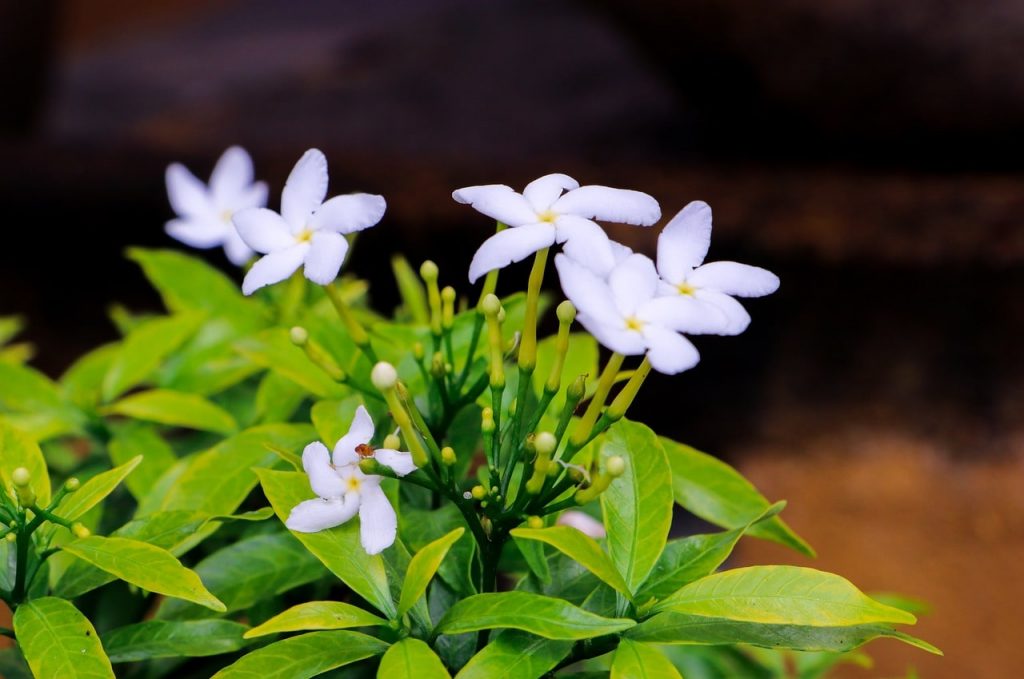
The plant needs to be offered a trellis or climbing device so that it climbs up and hangs down beautifully.
Tip: If you decide to place Asian Jasmine near a terrace or seating area, the scent of vanilla will provide a pleasant refreshment in the evenings.
If you give the star jasmine a climbing aid, it will gratefully accept it.
Care for Asian Jasmine
Asian Jasmine requires a sufficiently moist but not wet environment. Soil moisture can be provided by mulching.
Particularly long flowering can be achieved with sufficient nutrients – for this, you should fertilize with a fertilizer for flowering plants every 2 weeks from April to November.
In case of nutrient deficiency, flowering sometimes stops and growth decreases. To prevent this, liquid fertilizer can be added regularly when watering.
It is adapted to the nutrient needs of flowering plants, and its potassium content supports resistance to many pathogens, as well as frost resistance.
For long-term container growing, we also recommend using a granular fertilizer early in the year to prevent phosphorus deficiency. In winter, however, the top dressing should be completely stopped.
Asian Jasmine can be pruned before the onset of winter. However, in principle, pruning is not required – it is much better to attach the plant to the trellis to give it shape.
In addition, potted plants should be repotted every 2 years into a slightly larger pot.
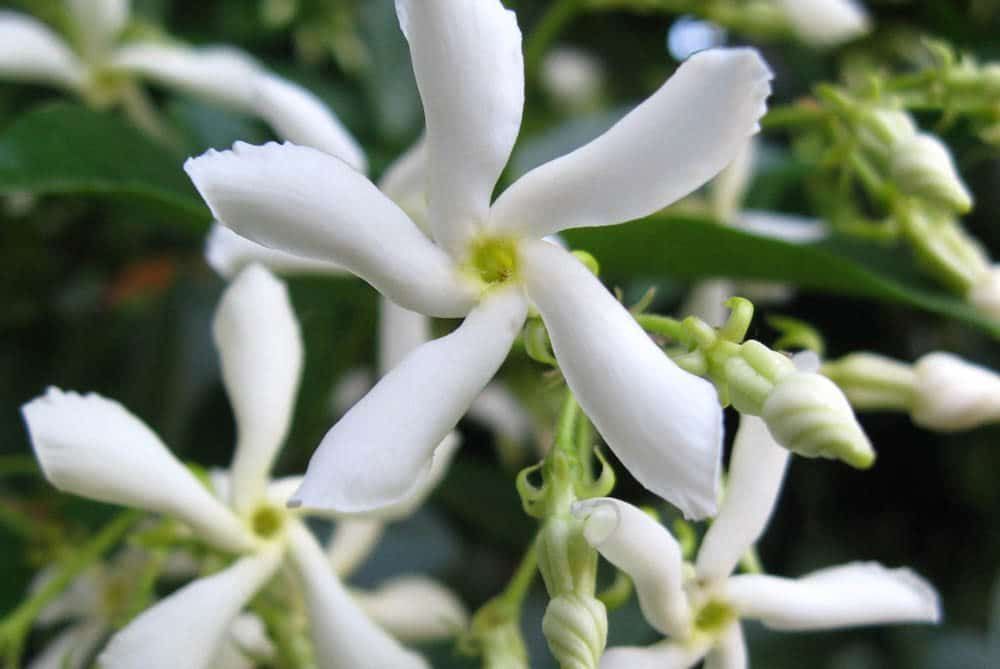
Tip: Wear gloves when trimming Asian Jasmine because its milky sap is toxic and can irritate the skin.
Brownish Leaves: What To Do?
Leaf browning often occurs after frost damage. At the same time, part of the leaves dies off as a result of keeping the plant at low temperatures.
Its recovery time can vary depending on how cold the temperatures were and how long Asian Jasmine was exposed to those temperatures.
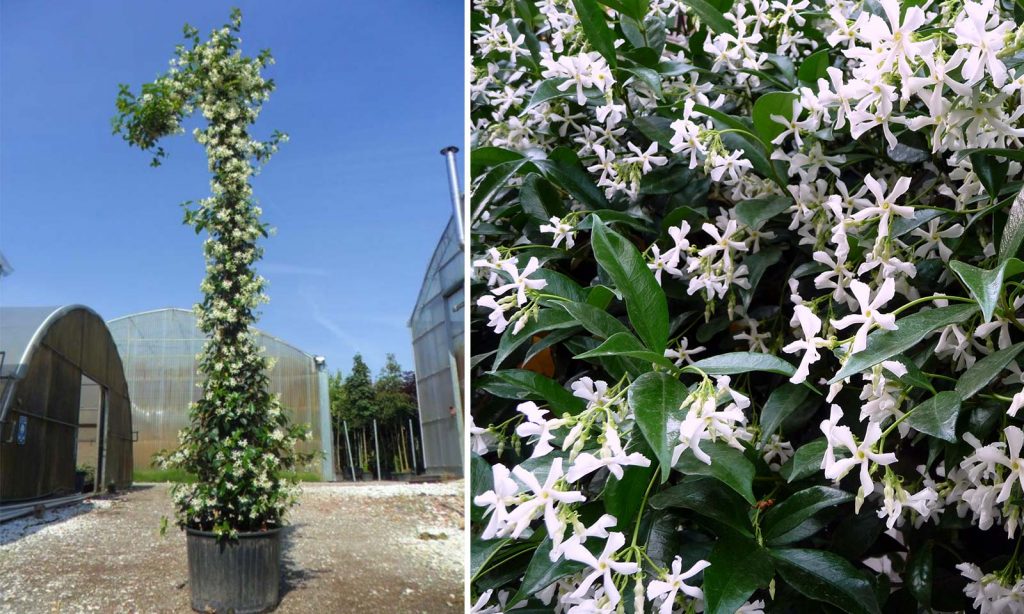
You can encourage healing by removing brown leaves. Other causes could be waterlogging or sunburn from too much direct exposure. Sunburn occurs mainly in early autumn, as it is caused by a combination of sun and cold.
Is Asian Jasmine Winter Hardy?
Asian Jasmine is winter-hardy only conditionally. Therefore, if possible, the plant should be stored in winter in a bright, non-freezing place, for example, in a greenhouse or barn at a temperature of 3 to 18 ° C. If the plant is left in the garden, the winter sun will draw moisture from the leaves even on cold or frosty days.
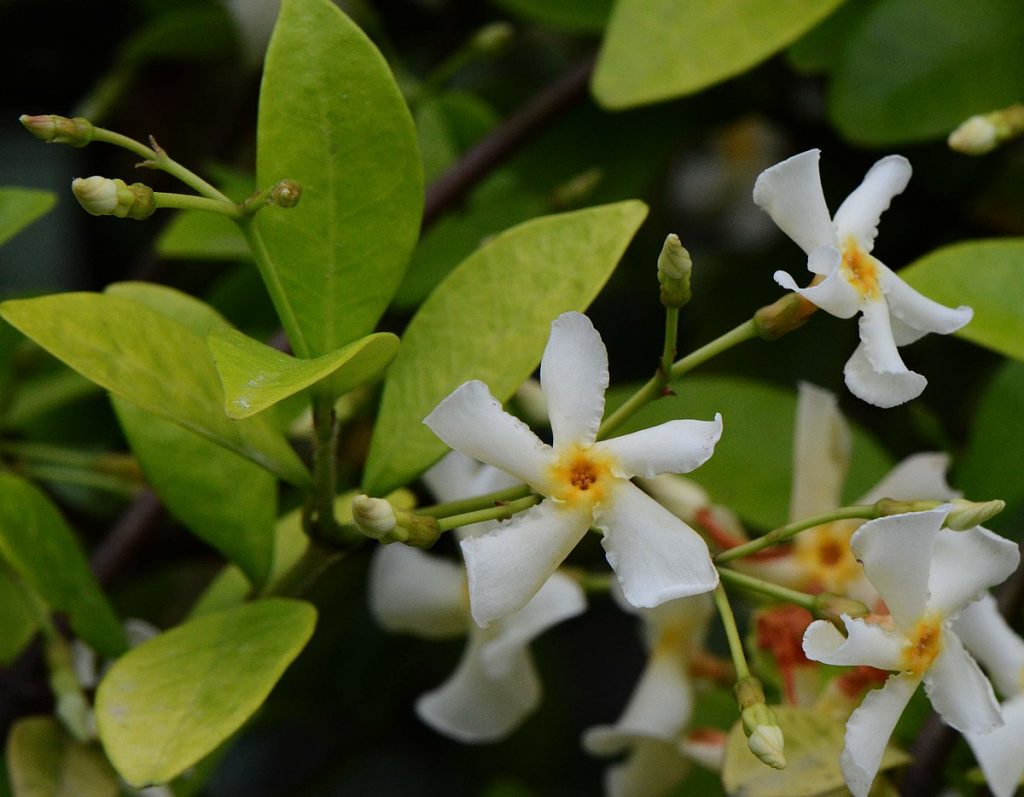
The soil should always be sufficiently moist so that the Asian Jasmine does not dry out. If necessary, water during frost-free periods when natural precipitation is not enough.
The strength of the sun and, consequently, evaporation can be reduced by shading – for example, by hanging spruce branches between the shoots. However, the materials used for shading must be permeable to air and some light:
- Protect the root zone with foliage and spruce branches.
- Shade the entire climbing plant in an airy manner.
- Give little water on frost-free days.
Tip : After wintering, slowly accustom Asian Jasmine to the sun to reduce the risk of sunburn.

To keep Asian Jasmine for a long time, it needs to be protected in winter.
Reproduction of Asian Jasmine
Asian Jasmine can be propagated by sowing or cuttings. However, getting seeds is not easy. Therefore, if possible, choose propagation by cuttings. Do it like this:
- Green or semi-mature shoots 10 cm long are cut from the main shoots in summer or autumn after flowering.
- Place them in potting soil.
- Provide a suitable temperature of 15 – 20°C.
- For best growth, cover the pot with plastic wrap to keep the humidity high.
- Water the cuttings sparingly and let the soil dry out from time to time.
- Rooted plants can be transplanted in spring.
Tip: propagation by air layering is also possible in the spring.


